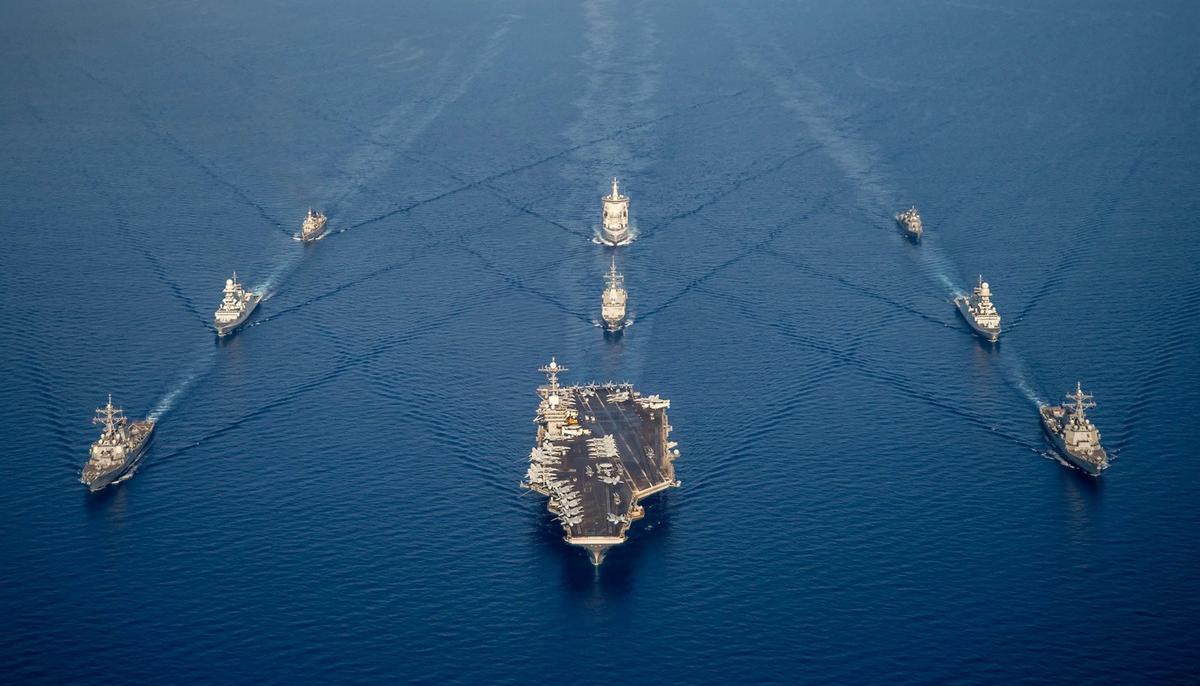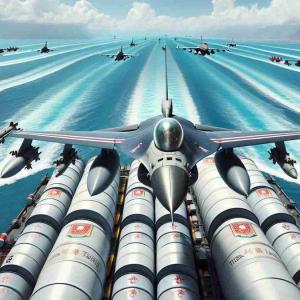Despite China's progress, developments suggest its naval forces may be a generation behind America's in cutting-edge combat technology.
US Chief of Naval Operations Admiral Lisa Franchetti emphasized the importance of the upcoming aircraft, tentatively designated F/A-XX, in an Oct. 2 message.
"We expect the sixth-generation platform to be able to have advanced sensors, advanced lethality, advanced range and be able to integrate with manned and unmanned capabilities ," said Franchetti, noting the US Navy's focus on combining these innovations with lessons learned from US Air Force NGAD program.
The US Navy plans to award a contract soon, and Boeing, Lockheed Martin and Northrop Grumman are competing to develop the next-generation fighter jet.
"We are in the process of sourcing right now," Franchetti confirmed during a Defense Writers Group meeting, emphasizing the strategic importance of air platforms and submarines as key assets of the US Navy.
The F/A-XX is expected to replace the aging F/A-18 Super Hornet multirole fighters, as well as their E/A-18 Growler version specialized in electronic warfare actions.
Boeing F/A-XX for the US Navy in the mid-2030s
A key feature of the F/A-XX program is its integration into a "family of systems," similar to the Air Force's NGAD initiative. This family of systems will include highly autonomous combat aircraft (CCA) and highly autonomous drones designed to operate as loyal companions alongside manned combat aircraft.
These drones will be based on artificial intelligence and will enhance the capabilities of the fighter jet in contested environments, especially in A2/AD (anti-access/area denial) scenarios.
The aircraft will provide improved range, advanced detection and electronic warfare capabilities, significantly exceeding the capabilities of the Navy's current fleet of fifth-generation F-35C aircraft. The new platform is scheduled to be operational by the mid-2030s.
Sixth generation aircraft will maintain the advantage over China
As China continues to upgrade its naval aviation capabilities, this next-generation platform will keep the US Navy at the forefront of the evolving military technology landscape.
Although the People's Liberation Army Navy (PLA) has advanced in testing the FC-31 (the carrier-based variant of the J-35), the United States remains the leader in naval aviation capabilities.
The US Navy's fighter jets are already a force to be reckoned with. The F-35C — which entered service in 2019 — is the Navy's most advanced fighter jet, but it also remains the world's first and only long-range stealth fighter designed explicitly for carrier-based operation.
F-35C aircraft landing on the USS Carl Vinson aircraft carrier. Photo: US Navy
In stark contrast, Chinese naval aviation capabilities still lag behind. Its only carrier-based fighter is currently the J-15, a fourth-generation aircraft that entered service over a decade ago. While the J-15 has seen significant use, its weight, fuel load, and mission range limit its effectiveness compared to its American counterparts.
However, China recently began testing a naval variant of the J-35 advanced fighter jet, a fifth-generation aircraft that promises improved radar capabilities and a reduced radar signature.
The aircraft was originally designed for use with the Fujian aircraft carrier, and its appearance on the Liaoning, which uses an inclined launch pad, indicates that the J-35 could also be operated from China's older aircraft carriers.
The J-35 is not expected to enter service until the early 2030s, however, indicating that China will remain at the fifth-generation level for a long time. By the time China deploys the J-35 in significant numbers, the US Navy will likely be on the verge of fielding the sixth-generation F/A-XX, as it is currently known.
Significance of aircraft on taxation in the Indo-Pacific
The generational gap between US and Chinese fighter jets will have profound implications for naval power dynamics, particularly in the Indo-Pacific region, where both nations are vying for influence.
Deploying a sixth-generation fighter jet would give the United States a decisive advantage in key strategic areas such as the South China Sea and the Taiwan Strait, regions where China has steadily increased its military presence.
The US Navy's anticipated technological leap could allow it to outnumber China's fighter jets to the point of deterrence, while ensuring air superiority in a potential conflict.
Furthermore, sixth-generation aircraft are not just a response to China's advances, but part of a larger strategy to future-proof the US military in an era of rapid technological change.
The United States plans to develop an air force adequately equipped to address future threats characterized by the incorporation of AI, drones, and advanced weapons systems.
The ability to operate in highly contested environments such as A2/AD areas will be critical to maintaining US naval dominance in an increasingly multipolar world.
However, the US Navy faces its own budget challenges. Earlier this year, the Navy delayed about $1 billion in investments for the F/A-XX to prioritize immediate readiness requirements, and there is a possibility that further cuts to the program's budget may be imposed in the US Congress.
Budget constraints and specific financial constraints could delay the introduction of the sixth-generation fighter. Despite these obstacles and even the existence of some critics who claim that a completely new and advanced aircraft is not necessarily needed, the focus can be placed on optimizing the performance of the existing F-35C aircraft, the positions of senior US Navy officials suggest that the development of a new aircraft crew combat remains a high priority.







